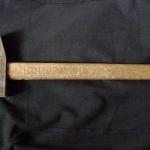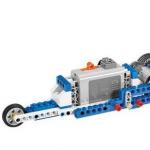When thinking about building or purchasing a country house, almost every owner dreams of a beautiful fireplace. They add elegant and romantic sophistication to the interior and allow you to truly enjoy the atmosphere of home comfort. In this article we will tell you in detail how to make a fireplace with your own hands, and our step-by-step instructions will allow even a beginner to cope with this difficult job.
Any fireplace, no matter what size or shape it is, consists of the following main parts:
- firebox;
- ash pan;
- grate;
- portal (body);
- chimney.

The combustion chamber, in turn, can be open or closed. If you have chosen a fireplace with a closed firebox, then the design will include additional elements: a damper, transparent doors made of heat-resistant glass.
The efficiency, service life and reliability of the fireplace are also affected by the materials from which it is made. You can build a fireplace entirely from brick, making the firebox part from heat-resistant (fireclay) material, and the rest of the structure from red ceramic.

Or you can purchase a ready-made cast-iron firebox, around which you can build a casing, a portal and a brick chimney.
Good thermal insulation of the combustion chamber is of particular importance, because if a fireplace is erected in a house made of wood, there is a high risk of fire. Therefore, great attention should be paid to the thermal insulation of the fireplace and the protection of the flooring, walls, and roof.
There are several classifications of fireplaces: by the appearance of the portal, by the shape and size of the firebox.
If the width of the portal does not exceed 51 cm, then such a fireplace is classified as small.
Width up to 63 cm – medium.
Over 63 cm - for large fireplaces.
The combustion chamber is made of steel or cast iron. Purchasing a ready-made firebox will greatly facilitate the process of building a fireplace. In addition, a closed cast iron firebox looks very stylish in a modern interior.

Some experts recommend lining the inside of a cast-iron or steel combustion chamber with fireclay bricks in order to minimize the contact of metal with fire, especially when it comes to steel. Under the fuel chamber, as a rule, there is a fuel basket.
Work processes in the fireplace occur as follows:
- Logs and firewood are placed in the combustion chamber on the grate and set on fire.
- The intensity of combustion is controlled by a slide valve, which opens or blocks access to oxygen. With an open type of firebox, the combustion intensity can be adjusted only by the amount of firewood.
- As wood is burned, the ash is collected under the grate, in a special ash pan, which must be cleaned regularly. The ash pan can be built-in, or you can make a retractable structure, which will greatly facilitate the operation process.
- Gases from burning logs are discharged through a special pipe to the street. You can equip the chimney with a forced draft, which is a fan. In this case, you can regulate the draft by turning the fan on or off, which will increase the heat transfer of the fireplace.
The fireplace chimney can be made of steel or brick. You can also find ready-made ceramic structures on sale today, but their construction requires special skill.

When developing a fireplace design for your home, great attention should be paid to fire safety measures.

The construction of a fuel chamber is one of the most difficult and critical stages of work. The firebox is located under the chimney. A special role is played by the fireplace tooth, which is integral with the back wall of the firebox.
Base
As for the base, it itself can have completely different sizes and shapes. This is a structural part that is located under the fuel chamber. It depends only on the owners where exactly the firebox will be located: below the floor or at the level of the kitchen table.

The lower the firebox is located, the more heat it will produce, taking in the cold part of the air from below.
It is preferable to make a firebox under which it is located at floor level, but this is not always possible. In a multi-storey modern cottage, it is impossible to build a fireplace of this configuration, because the ash pan must be located under the stove. Ideally, this is a working basement where the foundation is built.
But you can implement another version of the ash pan by placing it below the hearth of the fireplace with a pull-out system. Then operating the fireplace will not cause any difficulties at all.
Separately, you should stop at the level of inclination of the back wall of the fireplace.

Here the opinions of experts are divided into 2 camps. Some argue that it should be built strictly vertically. Others insist on building the back wall of the fireplace at an angle of 300 inward. Why is this tilt necessary?
The masonry of the fireplace also depends on the size of the combustion chamber. So, for structures with increased heat transfer, it is necessary to install the walls “on edge”. The slope of the rear wall of the firebox provides improved heat reflection into the room area.
Portal
There are two options for covering the portal: straight and arched. In this case, the radius of the arch should be equal to half the width of the portal.

The arch is the most reliable portal covering. It transfers the entire vertical load of the top row of masonry. According to their shape, they, in turn, are divided into 3 types: arched, straight and semicircular.
A semicircular arch is ½ part of a circle. This option is the simplest and most reliable. The radius of curvature is equal to ½ part of the width of the firebox.

The beam arch is flatter than the semi-circular arch and is best used for wide fireboxes. Or, if you are forced to limit the height of the firebox.

Onion arch
The arched arch is not ½ of a circle, but only 1 sector of it.

And finally, a straight arch is suitable if you need a direct overlap of the fireplace portal. Despite its simple appearance, it is considered the most difficult to manufacture. Here it is necessary to very accurately calculate the angle of the brick cut.

The firebox located under the firebox usually has a rectangular or trapezoidal shape, and above the firebox there is an outlet where smoke rushes when wood burns.
A small bridge or overlap is built in front of this mouth, and a “tooth” is built behind it. Above the firebox there is a smoke bag (smoke collector), where smoke is collected and directed up the pipe. To regulate this flow, a damper is installed in the front part.
Types of fireplace: configuration and location
When starting a project to install a fireplace in your home, you first need to think about its location.
There are several options for placing this heating unit:
- Central location. By placing a fireplace in the middle of the room, you certainly make it the main focus. It looks stylish and allows you to give the interior a special charm of country coziness. This arrangement also allows you to effectively warm the room, since warm air will circulate freely throughout the room.

But there is also a drawback to such a dislocation: the fireplace will occupy most of the area and interfere with movement. Therefore, if you are limited in square meters, then it is better to refuse this option.
- Wall fireplace. One of the most common options, which has a lot of advantages: saving room space, efficient heating, the ability to create a separate recreation area, etc.

The only drawback is that you will have to take proper care of fire safety and lay an additional layer of insulation between the fireplace and the wall.
- Corner fireplace. This option is suitable even for the smallest room, as it occupies a very small area. In addition, the corner design looks especially stylish. Another advantage of this arrangement is a simple ordering scheme that even a beginner in the stove business can handle.

If to build a free-standing fireplace you need to have a certain experience, knowledge and skill, since all the walls are visible, then the corner design will hide all the flaws. The main thing is to do the front part well; all other sides can be hidden from view with finishing materials.
The following factors must also be taken into account:

Basic rules for building a fireplace
In order for the fireplace to serve for a long time and delight you with its warmth, you must strictly follow the basic rules when constructing it:
- A brick fireplace is built on a separate foundation.
- To lay the firebox, you must use exclusively fireclay (heat-resistant) brick, which should not be tied to the main one.
- In the places where the door and ash pan are installed, it is necessary to lay an asbestos cord and leave a gap for the expansion of the metal.
- The inside of the combustion chamber should not be plastered.
- The rear wall of the fuel chamber should be positioned at a slight angle.
Don’t forget about fire safety, because any structure that runs on solid fuel poses an additional risk.

The main point of fire safety in arranging a fireplace in a country house or in a country house is the installation of cuttings in the path of smoke.
If the wall is adjacent to the fireplace, then a heat-resistant material (basalt fiber, asbestos, felt, etc.) must be laid between it and the heating unit. The thickness of such an overlap should be at least 20-25 mm.
If the fireplace is installed on a wooden floor, then it is necessary to lay a metal sheet around the perimeter or cover it with ceramic tiles with an indentation of 30-35 mm on each side.
Within a radius of 150 mm from the chimney, where it passes through the ceiling, it is necessary to organize reliable thermal insulation from a double layer of clay-impregnated felt or asbestos fiber.

The chimney must operate autonomously with only one fireplace.
There are also certain fire safety rules when operating a fireplace:
- Do not raise the fireplace to maximum temperature.
- Carry out systematic cleaning of the fireplace from ash and soot.
- The safe distance between the fireplace and the nearest flammable objects must be at least 70 cm.
- Use only suitable fuel for your country fireplace.
Calculate the dimensions of the fireplace correctly
When designing and creating a drawing of a future fireplace, it is very important to correctly calculate its width and height.
| Dimensions of elements, mm | Room area | |||||
|---|---|---|---|---|---|---|
| 12 m2 | 15 m2 | 20m2 | 25 m2 | 30 m2 | 40m2 | |
| Portal width | 400 | 500 | 600 | 700 | 800 | 900 |
| Portal height | 420 | 490 | 560 | 630 | 700 | 770 |
| Firebox depth | 300 | 320 | 350 | 380 | 400 | 420 |
| Rear wall height | at least 360 | |||||
| Rear width | 300 | 400 | 450 | 500 | 600 | 700 |
| Smoke collector height | 570 | 600 | 630 | 660 | 700 | 800 |
| Section of a chimney with a rough inner surface | 140*270 | 140*270 | 270*270 | 270*270 | 270*400 | 270*400 |
| Section of a chimney with a smooth inner surface | 140*140 | 140*270 | 140*270 | 270*270 | 270*270 | 270*270 |
The size of the firebox depends on the area of the room. There is a simple formula that will allow you to correctly perform all the calculations:
We measure the area of the room and divide it by 50.
The resulting value is the size of the combustion window.
To heat a small room of 20 square meters, a fireplace with a firebox opening of 0.50 m2 is sufficient.
We also suggest using the table to correctly calculate all the necessary parameters for your future fireplace.
After calculating the width of the firebox, you need to decide on its depth. The heating efficiency of the fireplace directly depends on this parameter. According to the standard calculation formula, it is equal to 2/3 of the height of the firebox.
If you ignore this factor and, for the sake of appearance, decide to increase the depth of the firebox, this will directly affect the heat transfer of the fireplace.
Almost all the heat received from the combustion of wood will go through the pipe to the street. In this case, the fireplace will serve more of a decorative function, delighting you with the beautiful glow of the fire. You will only have time to add firewood to the firebox.
When the depth of the combustion chamber is reduced in relation to its height, there may be a risk of smoke in the room.
In addition to the correct calculation of the firebox, great attention must be paid to the arrangement of the chimney, on which fire safety and good draft depend.
According to SNiP standards, the diameter of the chimney must be at least 150:170 mm. If you have chosen a chimney with a rectangular cross-section, then its width should be equal to 1/10 of the size of the combustion chamber.
The height of the chimney should not be less than 5 meters. But sometimes, with high floor heights, you will need to raise the chimney even higher. In this case, we focus on the roof ridge and the pipe outlet location.
The figure shows how to correctly determine the height of the chimney.

Therefore, carefully calculate all these parameters before you start building a fireplace with your own hands.
How to make a fireplace with your own hands: step-by-step instructions and procedure
We provide a diagram of the laying of a fireplace with a fuel chamber of the following size:
The width of the portal is 62 cm.
Height – 49 cm.
The depth of the fuel chamber is 32 cm.
The chimney cross-section is 26*26 cm.
We will lay out the back part of the structure from ½ of a brick, and the sides from a solid one.
Step 1. Sketch and drawing
Whatever size and configuration you choose for your fireplace, you need to complete drawings and sketches before you start building it.

- Drawing a sketch and completing the drawing.
Having decided on the place where you want to place the future fireplace, draw a drawing on paper. Now decide on the size of the unit and calculate each side. Make a detailed drawing. Make sure that the smoke exhaust system will not reach the ceilings or beams. Decide on which side the vent will be located and what type of firebox there will be.

- We prepare tools and materials.
You immediately need to decide what kind of cladding you will cover the fireplace with. If the structure is being prepared for jointing, then you need to purchase a red ceramic brick. If you plan to decorate with clinker tiles, then you can buy a more budget option.
We offer a detailed diagram for the construction of a red brick fireplace with a stone firebox.
For this we need:
- Fireclay refractory brick for the combustion chamber (not lower than M200).
- Red ceramic brick for the entire fireplace. – 250 pcs (not including pipes). You can additionally take 10% of the total quantity, taking into account defects and errors.
- Mortar for laying the foundation (cement, fine sand, gravel and water).
- Mortar for laying bricks.
- Roofing felt for foundation waterproofing.
- Boards for the construction of formwork.
- Grate.
- Blower.
- Metal door.
- Damper.
- Metal rods and wire for reinforcement.
- Metal wire 0.8 mm for dressing.
- Asbestos cord.

Prepare the following tools:
- Trowel for laying bricks.
- Tape measure and marker.
- Rule.
- Grinder for turning bricks.
- Building level, protractor and plumb line.
- Stapler.
- Shovel and bayonet shovel.
- Bucket for solution.
- Construction mixer or drill with attachment.
- Rubber hammer for laying bricks.
- Construction hammer for erecting formwork.
Step 2. Preparatory work
- Construction of the foundation.
Particular attention should be paid to the construction of the foundation, since all further operation of the fireplace depends on its reliability.

When arranging the foundation in a cottage in use, you must immediately take into account the location of beams, roof lintels, rafters, etc.
Do not save time and effort and make a separate foundation for the heating unit, so that when shrinking, the general foundation for the house does not deform the structure of the fireplace.
When arranging a foundation for a fireplace at the zero cycle of building a house, this process will not cause any particular difficulties. You simply carry out the work of constructing the base of the fireplace according to a single scheme:
— excavation of soil to the freezing depth.
— creation of formwork;
— making an underlying layer of sand and crushed stone;
— waterproofing using roofing felt or polyethylene;
— reinforcement with metal rods;
- pouring the foundation on 2 bricks to the finished floor;
— technological break 20 days.
We have previously discussed in detail. The layout of the foundation for the fireplace is no different.
It’s another matter if you decide to build a fireplace in an already used house. This process will be accompanied by the stage of dismantling the floor covering at the location where the fireplace is installed.
To do this, use a marker to measure the required size of the fireplace according to the drawing, make a 15-20 cm indentation on each side and use a grinder to cut a hole in the floor.
Place the used boards aside and begin digging into the soil. Next, proceed according to the standard foundation pouring scheme.
After raising the base of the fireplace to the level of the finished floor, you will need to beautifully design the gap between the floor covering and the stone structure.
Advice! No matter how carefully you work, during the process of laying a fireplace, dust and dirt will inevitably form in the house. Before starting construction work, cover all furniture and floors with polyethylene.
- Work to ensure fire safety.
When installing a fireplace in a wooden house, it is very important to protect the walls adjacent to it from overheating.
You can lay an asbestos sheet between the fireplace and the ceiling, or you can line the wall with ceramic tiles.
- Preparing bricks for laying.
After the foundation has completely dried and set, you can begin construction.
Select all the bricks, sort them by size and soak the part you will be working with at this stage. This must be done so that it does not absorb moisture from the masonry mortar.

Before building a fireplace, according to the procedure, even experienced stove makers first lay out the bricks “dry”. This way you will be able to see all the difficult places that you will encounter and avoid serious mistakes that will be difficult to correct later.
Advice. When laying out the rows “dry”, number each row on the bricks and put a serial number. This way you will complete the task faster.
Step 3. Laying the fireplace
The fireplace must be built on a foundation that is well waterproofed. To do this, measure the size of the structure on a sheet of roofing felt, cut it out and lay it in layers on the base.
Now you can start laying the fireplace itself. To lay a fireplace, use a mortar that is also suitable for laying stoves.
Soak the red clay in a trough of water for several days.

To prepare the solution, combine 8 parts sand and 8 parts clay, add 1 part water and mix thoroughly with a construction mixer.
Now let's check its readiness. The consistency should resemble thick sour cream. If it turns out too liquid, you can add a little sand.
Dip the trowel into the solution and see whether the mixture flows off it or not. If it glass, leaving a thin layer of 2-3 mm, then the solution is ready. If it turns out thick, dilute with water.

In order to clearly erect the fireplace vertically, you can pull plumb lines. They will serve as a kind of beacon by which you will navigate.
The 1st row is the base of the fireplace.

The correct layout of the entire structure depends on it. For this row it is better to use masonry mortar with a small addition of cement. The recommended seam thickness is 5 mm. Check the level horizontally and diagonally, determine the angles with a protractor. They must be strictly 90 0.
If you want to give the shape of the fireplace base an unusual look, you can lay bricks on the edge on the base row. The base must be raised 25-28 cm to the level of the finished floor.
Maintaining the same thickness of the seam when laying a fireplace is not so easy, especially for a beginner. There is a little trick. Use wooden slats 0.5 cm thick as a guide.

Make sure that the masonry mortar does not get on the front side, because we are building a fireplace “under the jointing”. After finishing the work, it will be troublesome to wipe off the frozen solution.
When placing a brick on the batten, press it gently with your hand and tap it over the entire plane with a rubber hammer. This way it will sit and grip well. Make sure that the solution is not squeezed out of the cracks.
The wooden slats are removed after 3-4 rows of bricks have been laid.
2nd row. It is laid out similarly to the first one with red brick, according to the diagram. We completely fill this row with bricks.
3rd row. Here we begin to build the bottom of the fuel chamber, laying fireclay bricks on the edge. There is no need to bind fire brick with red.
We install the grate, taking into account the gap for metal expansion of 3-5 mm.

Row 4 – we begin to form the firebox. When laying several rows, wipe the bricks with a damp cloth to help the mortar adhere better. Here in this row we install the fuel chamber door. Consider the gap for metal expansion.

The door, for reliability, is mounted on a metal mustache, which is placed in the seam between the rows of bricks.
In the 5th row we install a blower.

8 row. We tilt the rear wall of the firebox at 30 0. This element is also called the “mirror” of the fireplace.
9-14 row. Let's start forming the arch.
The ceiling of the portal is largely determined by the design of the fireplace. This part of the work will not cause any particular difficulties.
The simplest option would be to use steel corners on which bricks are placed. But with such masonry, it is better to later line the fireplace with decorative material that will cover the steel corner.
Considering that we chose the option “with a fireplace panel,” we will not use this method.
In order to accurately make a semi-cylindrical arch, it is necessary to make a circle from a sheet of plywood.

We draw a circle on the sheet with a compass, divide it into 2 parts of the required radius (1/2 part of the width of the firebox) and cut out 2 semicircles using a grinder.
Place these 2 parts of the circle on the floor and insert 11 cm long blocks of wood between them. Fasten the structure with self-tapping screws. The circle is ready.
All bricks must be ground onto a wedge. How to accurately determine the wedge size. You can, of course, calculate it using a formula, or you can use a proven method manually.

Place the circle on the floor and attach 1 brick to it.
Take the thread and stretch it from the center of the circle to the upper left corner. Draw a pencil along the stretched thread.

Do the same procedure with the right side - this way you get a batch of bricks with measured markings for the wedge. All that remains now is to carefully cut off the markings with a grinder. Be sure to number the bricks first so you can easily place them in the correct order.

Lay out the arch symmetrically, bringing the bricks from the corners to the center.

Chimney laying
Row 19-20. We are building a chimney.
21-22 row. We continue to build the chimney. In row 22 we install a fireplace damper.
23rd row we make a fluff, giving the structure a dovetail shape. The fluff or “otter” is done in the place where the chimney pipe is in maximum contact with the roof.

The height of the fluff can vary from 29 to 36 cm. A drain is placed above the fluff, which is laid out until it comes into contact with the roof. The size of the riser and chimney pipe must match.
There is a metal umbrella on top of the chimney to protect from precipitation and debris.
Step 5. Cladding work
In order to grout the fireplace joints, add clean sifted river sand to the clay solution and mix thoroughly. This mass should be thick and plastic.

Step 6. Putting the fireplace into operation
Considering that the fireplace is laid with wet bricks, before the first kindling, the structure must be thoroughly dried.
Natural drying occurs in the first week. To do this, simply open the door of the ash chamber and the firebox. And in the second week, you need to light the fireplace every day and not bring it to maximum heat. Check traction.
Instructions for laying a fireplace with a cast iron firebox and a metal chimney
The advantage of installing a chimney pipe made of steel (in our case, sandwich pipes) is that it can be removed through the wall. This greatly expands your options for placing a fireplace in your home.
To build such a fireplace, you will need the same tools as in the previous instructions, and from the materials you need to prepare:
- Cast iron firebox with glass.
- Sandwich pipe set.
- Silicone sealant.
- Clamps, tee.
- Elbow 45 0 or 90 0 (depending on the location of the chimney structure).
- Bracket for supporting the chimney pipe.
- Mineral wool (to insulate the passage of pipes through ceilings).
- Protective umbrella for the pipe (from precipitation and debris).
- The arrangement of a separate foundation is carried out in a standard manner with the deepening of the soil, the construction of formwork and cementing.
- Insulation of walls from the fireplace. The fireplace cannot be mounted close to the wall. Therefore, it is necessary to lay super insulation between the wooden wall next to which the fireplace will be located. If space allows, you can build an additional thin wall of sand-lime brick. Please note that in this case the wall must be built on the same foundation as the fireplace. Take this into account when designing. The size of the wall should exceed the size of the fireplace by 50-70 cm on each side.
- Laying the base (2 rows are laid with solid bricks).

- Construction of a pedestal - we lay out 4 rows of red brick in the shape of the letter P. If you have chosen a wide firebox, then the width of the pedestal should also be increased. Use cement-clay mortar when laying bricks. The pedestal will increase the heat transfer of the fireplace, because cold air will be taken from below and, passing through the firebox, rise up.
- Ash pit installation.
- On the 4th row of bricks, we make grooves using a file, and insert metal corners into them with the edges up.
- We lay the 5th row of bricks, which will be the base under the firebox. We apply a layer of fireproof mastic on it.
- We install.

You will need an assistant for this job due to the heavy weight of the structure. It is necessary to carefully lower the fuel chamber from bottom to top, at a distance of 5 cm from the back of the wall. While the mastic or fire-resistant glue has not hardened, check the degree of horizontal inclination with a building level. At this stage, you can still correct errors.

- from sandwich pipes.


- Brick lining of the firebox. After the firebox is connected to the chimney, it is necessary to cover it with bricks using heat-resistant glue or cement mortar.

When lining the firebox, it is very important to take into account the thermal gap of 5 mm between the cast iron wall and the outer casing. The order in this case is not important, since, in essence, you are building a brick box according to the dimensions of the finished firebox. At the stage of finishing the chimney, it is very important to ensure that the lining does not rest on the pipe.
- Lining the chimney with plasterboard. Immediately according to the scheme, a frame is erected from a metal profile, onto which drywall is screwed with self-tapping screws.

It must be insulated from the inside with heat-insulating mats made of non-combustible material. In this case, they should be attached with the foil side to the firebox and chimney.
- We cover the outer part with plasterboard.
- Facing works. You can beautifully decorate a fireplace with any facing material: clinker brick, decorative stone, plaster, etc. After the cladding work has been completed, the flooring can be completed. Keep in mind that parquet or laminate cannot be laid close to the fireplace. The distance must be at least 80 cm.
- Drying the fireplace and heating it.
When all the work is completed, you can decorate the fireplace with a stylish, hand-made fireplace.
It’s unlikely that anyone would argue that you can look at the flickering fire in the fireplace for an infinitely long time.

And if everything is strictly followed according to our instructions, then such a fireplace will delight you not only by creating a special aura of home comfort, but will also provide warmth, heating the house.
To make it easier for you to understand how to build a fireplace with your own hands, we suggest that you familiarize yourself with the detailed video instructions.
Video. Fireplace masonry
Fireplaces simultaneously heat and decorate the surrounding space. You can handle laying a brick fireplace on your own. You just need to read the manual and do everything in accordance with the instructions.
Remember to have an efficient and reliable chimney. The standard length of the smoke exhaust structure is 4-5 m. In some situations, this figure increases to 700 cm.


In a room with a fireplace, high-quality ventilation must be organized.
The actual construction of the fireplace is carried out on a solid platform that can support the weight of the finished structure.
Determination of basic dimensions

Perform the necessary preliminary calculations. Determine the volume of the room allocated for the construction of the fireplace. The firebox opening should be 1/50 of the room volume you calculated.
The height of the portal should be 2 times the depth of the firebox.
The dimensions and ratios given are very important. If the depth of the firebox is greater than the permissible value, the fireplace will significantly lose heat output. With a smaller firebox size, smoke will occur.
Select the dimensions of the smoke openings taking into account the dimensions of the combustion area. The cross-sectional area of the chimney should be 10-15 times smaller than the area of the firebox.
The optimal diameter of round chimneys is 100-150 mm. The length of the smoke exhaust pipe can reach 500 cm or more.
Preparation of materials
Prepare the required quantity (determine in accordance with the planned dimensions and design of the fireplace). Also prepare fireclay bricks for arranging the firebox.


Additionally, prepare the following:
- mixture for bricklaying;
- 12mm glass-magnesium sheet;
- chimney;
- oven tape for mounting accessories;
- metal corners;
- chimney view.
Before starting work, cover everything that needs to be protected from contamination with polyethylene.
Prices for fireproof mortar for stoves and fireplaces
Fireproof mortar for stoves and fireplaces
Fireplace base

The foundation design will include metal corners. They will additionally increase the strength of the site and protect it from destruction during seasonal changes in the soil.
Dig a hole for arranging the foundation in accordance with the design dimensions.
Fill the bottom of the hole with a sand and gravel mixture. Seal the pillow and place metal corners on it. Double the corner so that the most reliable and durable base is created during the laying process. It is recommended to weld the corners so that they do not move in the future.
In this case, the corners must be mounted in such a way that the masonry elements installed later are located parallel to the interior partition connected to the fireplace (if this design option is chosen).
Place bricks in the corners, fill the entire structure with cement mortar and carefully level it using a plaster trowel.
The thickness of the solution should approximately correspond to the thickness of sour cream. With this consistency, the solution will be able to penetrate into all the cracks of the masonry without leaving the seams.
Ensure the base is horizontal. To eliminate surface unevenness, use the same cement mortar. Leave the structure to dry for a couple of days.
Masonry


Cover the dried foundation with a double layer of roofing material. This will provide the necessary protection for the base.
Prepare mortar for brickwork. Traditionally, fireplaces are laid using a solution based on pre-soaked
Laying the first row is best done using mortar with a small addition of cement (approximately 10-20% of the total mass of the mixture).
Calibrate the bricks in advance, selecting the most suitable sized products for laying each row.
Before starting laying, immerse the bricks in water for a while. This will allow the products to become saturated with moisture. Otherwise, the bricks will take water from the clay mortar, which will lead to a significant deterioration in the quality of the masonry.
Lay out the first row of bricks edgewise. Check that the row is laid out correctly with a square and level. Make sure the opposite sides and diagonals of the base are the same length.
The masonry is carried out in accordance with the order. The following will be a procedure that is relevant for most existing types of fireplaces. For the rest, rely on the drawings you have.

First step
Lay out three continuous rows of the base.

Second step
Lay out 4-5 rows with an ash pan.


Third step
Lay out 6-7 rows with arranging the bottom and brick frame.










Fourth step
Continue laying. Up to the 13th row inclusive, form the walls of the firebox of the heating unit.
Fifth step
Lay out rows 14-19 with a smoke collector.





Sixth step
Lay out 20-25 rows of the fireplace with a chimney arrangement.
Arrange the base and continuous rows of masonry using a trowel or trowel. and the fuel chamber are laid out manually, because At these stages it is very important to control the quality of the solution used.
Apply fireplace mortar to the middle of the bricks. The edges of the elements must remain free.
When laying out each row, adhere to the chosen order. For greater convenience, you can number the products.
Pay special attention to the quality of the masonry of the fuel compartment and smoke exhaust ducts - these elements must be laid out as evenly as possible and as airtight as possible.
Remove excess masonry mortar immediately.





Find out how to do it with step-by-step instructions from our new article.
To form a beautiful curved fireplace arch, perform a gradual overlap of masonry elements. It is important that the overlap size does not exceed 50-60 mm in each row.
The construction of curved lintels is carried out using temporary formwork - circles. To fix such formwork, use supports under the fireplace vault being installed.
Start laying from the brick installed in the center, and then carry out symmetrical laying in both directions.
Periodically check the verticality of the smoke exhaust pipe. Even the slightest deviations from the vertical can lead to smoke in the room.

To lay the chimney, use a mortar with added cement, similar to the mixture used when laying out the fireplace base.
The smoke exhaust pipe must be covered with a layer of fire-resistant insulation to increase fire safety. Insulation is installed where pipes pass through the structure of the house (floors, roofing, etc.). The most commonly used insulation materials are asbestos based.
Prices for refractory bricks
Fire brick
To give the fireplace a more attractive appearance, finish it. The most commonly used finishing methods are:

Choose a specific finishing option at your discretion. If you like the fireplace without finishing cladding, unstitch the masonry seams using a special tool and thoroughly clean the surface of the structure from excess mortar.
Important: only fire-resistant paints and varnishes can be used to paint the fireplace.
Otherwise, the external one depends solely on your imagination and personal preferences.
Good luck!
Video - How to build a fireplace with your own hands
- Kuznetsov fireplace-stove
- Buleryan
- Nuances

Creating your own fireplace in the country is a great idea. It will especially appeal to lovers of home comfort, those who like nothing more than to spend time with their family over a cup of hot tea, talking about this and that... In addition, a warm fireplace will not only warm your home in the winter cold, but also will become an element of a stylish interior.
Naturally, you can make this device yourself, but only if you have certain construction skills and relevant knowledge. Otherwise, it is recommended to contact specialists who will skillfully and quickly build this miracle for you and your family.
The fireplace has a number of positive qualities, and there are many of them. However, for them to manifest themselves fully, the heating system must be organized correctly, designing it carefully and taking into account all the subtleties. Not everyone can do this, and you also need to think about the material side of the matter. A fireplace is not the cheapest product. In addition, many owners prefer to build a functional fireplace, which will at the same time perform the work of a stove - it will be possible to cook food on it and heat it from it like a radiator.
Varieties
The best time to choose a fireplace is when the building is just being designed.
This will make installation work easier later on. And if you first develop a construction plan and approve it, then in the future not every fireplace will be able to fit it.
It is also important that when designing, we immediately decide on the design of the chimney, decide what shape and design of the fireplace will look best in our home.
If we talk about technical issues, it should be said that the preliminary selection of a fireplace allows you to organize the necessary draft, normal heat transfer, as well as a high efficiency.
Choosing a fireplace
When choosing the type of fireplace, look through all the available options. This could be a typical fireplace, which we all perfectly imagine, or maybe, for example, an electric or gas device, even a bio-fireplace, which helps preserve natural gifts and whose operation does not adversely affect the environment.
You can also install a fireplace stove, as discussed above. This will be an excellent solution for a country house.
These heating systems are also divided into open and closed.
Cast iron fireplace stove
At the dacha, we all need to be warm and comfortable. That is, the room should heat up as quickly as possible and subsequently not cool down for a long time. To achieve this, a fireplace stove made of cast iron is used. There is more than one type of such devices. In particular, a distinction is made between single- and double-circuit designs.

The first are the potbelly stoves we know, the second allow you to cook soups and cereals directly in the oven. Thus, we can put all varieties into three large groups:
With ABX stove function
These devices are also chosen by many owners of country houses. The efficiency of such fireplaces reaches 80 percent. In addition, they are very easy to install yourself.

The structure of ABX stoves contains heat exchangers, thanks to which these fireplaces are able to heat quite large rooms at once. AHV are divided into:
- classic;
- steel;
- tiled.
Each such stove has a base, the firebox itself, as well as an outer lining.
- The base is made of materials such as cast iron, ceramics (metal) or tiles.
- The external cladding is also made from tiles supplied to our country from Slovakia.
- This material is flame resistant, which makes its use in Russian homes very possible. The tile tolerates temperature changes well and distributes heat throughout the room.
- For the other part of the structure - the firebox - they again take either cast iron or strong steel, and sometimes a combination of materials is used.
- ABX fireplaces are characterized by a high level of efficiency, exquisite external design, ease of installation, as well as a double gas combustion system and the ability to adjust combustion activity.
Fireplace-stove at your dacha
It is believed that this design is the best option for installing it in individual country cottages, as well as country houses. Each type of fireplace stove has its own characteristics, which will be discussed below.
- So, a fireplace stove made of brick.
- It is a device in which the stove and fireplace are combined and belong to a single foundation, and also have a common chimney.
- Such a fireplace can have a heating function, and sometimes owners also purchase devices with the ability to cook food on them.
Kuznetsov fireplace-stove
Kuznetsov fireplace-stove. At one time, Kuznetsov invented and put into operation a special system that made it possible to consume fuel more profitably.
- The fuel undergoes combustion in a hood equipped for it, as a result of which energy is consumed very rationally.
- It becomes possible to use several heat generators at once, rather than just one, and each of them has its own power.
- All installations that are located in the hood are connected to each other.
The main advantages of such a stove include long-term preservation of heat in the building - throughout the whole day, as well as rational use of energy - little is spent, but heat is released in a large volume.
Buleryan
Another variety is Buleryan. It contains such elements as a firebox, a water tank and a room for stones. All this is covered with an outer cover made of steel that is not susceptible to fire. Paint is applied to the top of the casing, which also does not burn. In most cases, such stoves are installed in bathhouses, but there are also modified products, supplemented with cooking and heating functions.

How to make a fireplace in your country house with your own hands: advice from experts
Once you have decided on the type of fireplace, you can begin assembling it. Of course, stores now sell a great variety of different installations - I bought it and installed it, nothing complicated. And if you decide to install the stove yourself, you will have to work hard.
- The good thing about the process, however, is that it allows you to save money. Of course, before installation, evaluate your knowledge of building codes so that you don’t get stuck at any stage during the process.
- If the fireplace is being built in a country house, it must be installed to a depth of sixty centimeters. If your house is quite high (two tiers), make it deeper - about 80-100 centimeters or more.
- It is better to build a new base for the fireplace, that is, make it separately from the foundation of the entire building.
- If the fireplace is not very heavy, brick is suitable as a base for it.
- It should be laid in four, or even six rows, on the edge.
- The bricks are glued together using M400 cement.
- If the fireplace is quite massive, the foundation will have to be poured and then protected with reinforcement.
- Concrete combined with crushed stone and pieces of brick is used as the base material.
We make formwork for a country fireplace
- It must be covered from below and on the sides with roofing felt to prevent water from penetrating.
- Bitumen is applied to the joints.
- The bottom of the foundation must be sprinkled with expanded clay, but in a small amount.
- The top of the base should be 10-20 centimeters from the floor (below).
- A clay solution is placed at the floor level. In this state, the base is allowed to rest and dry completely. This will take approximately seven days.
- To prevent heat from going to waste, the chimney must be made with thick sides.
- The inside wall is laid 1 brick thick.
- On the outside - one and a half or even two bricks.
- The chimney that goes outside must be properly insulated.
- The best traction will be created by structures whose length will exceed five meters.
- The front side of the smoke part goes up and fits very tightly with the chimney itself.
- The rear wall is made only in a flat vertical position and ends with a chimney.
- The damper should be installed not far from the firebox - twenty or thirty centimeters, so that it is approximately two meters from the floor.
Let's look at the manufacture of a brick stove-fireplace
Video on the topic
In a small room, a bulky stove that takes up several square meters of scarce space will look ridiculous. For a miniature living room in a country house or cottage, a small fireplace is more suitable. A built-in, wall-mounted or corner model will fit best into the environment. The compact dimensions of the equipment significantly reduce its weight, simplifying the requirements for the foundation. It's time to find out what kind of mini-fireplaces there are and how to build a fireplace yourself.
Ready-made solution: compact metal fireplaces
The easiest way is to buy a mini-fireplace made of cast iron or steel with a closed firebox and install the finished device in the right place, taking care of the chimney. The glass door will protect against random sparks and excessive heat, which is especially important in rooms whose area does not exceed 20 meters.
Cast iron and steel fireplaces are attractive not only because of their compact size, but also because of their light weight. On sale you can find models whose weight is less than 100 kilograms. These miniature fireplaces are ideal for installation on the second floor or in the attic.
Compact cast iron model
Among the small units there are heating and cooking stoves-fireplaces that can replace a kitchen stove. These devices are no larger in size than a standard stove, but in addition to their “duties” of preparing dinner, they decorate the interior with a mesmerizing flame.
How to build a miniature home with your own hands
The advantage of a brick hearth is the ability to independently choose the shape, dimensions and design. When purchasing a finished product, you have to limit yourself to the manufacturer’s standards.
Design Features
Even a novice master with basic knowledge about laying stoves can build this mini-fireplace with his own hands. A small fireplace is designed for a room with an area of 16-20 m2. Its height is 1120 mm, and the base is 1020 mm wide and 510 mm deep.
On the side walls of the structure there are heater channels, passing through which the cold air is heated, after which it exits through the air vents located on 12-14 rows. Due to this, the thermal efficiency of the equipment is significantly increased.
On the back wall of the firebox at the level of 11-12 rows there are protrusions that form a smoke tooth. To clean it from soot, a rear cleaning door is built in. The fireplace chimney has dimensions of 260*130 mm. Pins are provided for hanging the metal screen.

Miniature fireplace for a room of 16-20 m2
Necessary materials
To build a small fireplace, 300 bricks will be enough (this amount does not include the materials necessary for the construction of the chimney). Fireclay bricks are used to lay the fireplace insert, and for the construction of other structural parts, you can choose another type of heat-resistant brick.
For laying stove equipment, professional stove makers recommend using clay mortar with the addition of sand. To obtain the thinnest possible seams, the clay should be cleared of large particles by sifting or washing. The sand also needs to be sifted - it should be clean and fine, with a grain size of no more than 1 mm. It is important to correctly formulate the proportions of the components, taking into account the plasticity and fat content of the clay.
In addition to the basic materials, metal parts will be required:
- grate size 140*180 mm;
- cleaning door (160*270 mm);
- four air vents measuring 130*130 mm each;
- smoke damper (130*260 mm);
- stainless steel for the screen (sheet area 0.5 m2);
- pre-furnace sheet (500*700 mm).
Laying a mini fireplace
Before building a brick fireplace, you should make sure the strength of the floor. It may be necessary to strengthen the ceiling or build an additional foundation.
The first row of the hearth is made of 16 bricks. Next, the laying continues, following the sequential pattern. The thickness of the seams should not exceed 5 mm - thin seams significantly increase the efficiency of furnace equipment. Experienced stove makers apply clay by hand, but you can also work with a trowel. To control the horizontalness of the masonry, use a level. The side walls should be rotated 25 degrees.

Brickwork diagram

Sequence of laying a mini-fireplace
Video: order with explanations
Quick Solution: An Alternative to a Wood-burning Fireplace
If the room is very small, but the desire to spend evenings near the hearth haunts you, it makes sense to take a closer look at alternative options. Modern electric fireplaces create the flame effect so reliably that it is difficult to distinguish an imitation fire with the naked eye.

Electric fireplace with live fire effect
Biofireplaces give their owners real fire, but without smoke. In the assortment of these wonderful fireplaces powered by biofuel, it is easy to find very small fireplaces that can be installed in a bedroom, kitchen or bathroom of any size.

Biofireplace in the bedroom interior
For an electric or bio-fireplace, you can build a portal from plasterboard and decorate it with brick-like tiles or decorative stone - in appearance, the imitation will be no different from the classic version. To save on construction and finishing of the side walls, it is recommended to choose a corner fireplace - a small fireplace will organically fit into any design style.
For those who do not want to give up the dream of decorating their home with a full-fledged wood-burning fireplace, but do not have experience in installation and masonry work, we recommend that you do not waste your time, but turn to professionals. They already know where to start and how to quickly turn their dream into reality.
People have long ceased to associate a dacha with a place of slave labor for the sake of a sack of potatoes for the winter. Now the dacha plot is being improved and turned into a place to relax from the bustle of the city. In addition to the house and various buildings for utility purposes, gazebos or terraces with barbecues, barbecues, and a garden are often installed on the territory. If you are organizing a summer kitchen outdoors, you should take care of installing a garden fireplace.
On the one hand you will receive a functional design, on the other – a decorative element in the country house.
The design of a brick garden fireplace is very similar to the fireplace blocks and stoves that we are used to seeing inside the house as a heating device. But still, this building has its own distinctive features.
Organizing a garden fireplace with your own hands in the open air requires compliance with installation techniques and safe use:

Note.
A garden fireplace, regardless of the material of manufacture, must be installed on a concrete foundation, which is covered with metal or chips made of heat-resistant materials.
Very often, due to inexperience, people confuse garden houses with cooking equipment, that is, barbecues, barbecues or smokehouses. Of course, a fireplace can also be used for similar purposes, but it has fundamental differences.
Firstly, it is not very convenient to cook food on it, and soot and fatty deposits will make themselves felt every time you light it. In addition, the fireplace mirror and tray are very difficult to clean, so it would be more practical to use a portable barbecue or barbecue, installing it away from the gazebo. But what can you still cook in a stove with a fireplace for a brick cottage? All foods that can be wrapped in foil, unleavened dough or clay. Also, if desired, you can use it to prepare coffee, tea or other hot drinks; the taste will be fabulous.
We build a garden fireplace ourselves
What do you need?
As with any type of construction, in order to build an object that will last a long time, it is necessary to select high-quality materials. To build a fireplace you will need:
- Ceramic single brick with a high degree of density. The greater the weight of the brick, the better for construction.
- Clay for bricklaying. Experts advise purchasing it at brick factories, where the building materials themselves are available. This guarantees high quality masonry.
- stone. Quantity is not limited.
- Masonry mixture.
- , crushed stone, sand, metal fittings.
- Material for the construction of a firebox with a high level of fire resistance. The best is considered to be the Austrian fireclay RATH or the Russian product ША5.
- tiles, glazed or fireclay bricks.
Important.
Fireclay blocks for constructing a fireplace insert can be replaced with a cast iron chamber, which can be purchased at a specialty store. This will reduce the installation time of the structure.
Making a garden fireplace with your own hands
 The dimensions of the future device and its design have a direct impact on the amount of material purchased. The location of the fireplace on the street does not limit the owner of a suburban area in choosing the shape of the structure.
The dimensions of the future device and its design have a direct impact on the amount of material purchased. The location of the fireplace on the street does not limit the owner of a suburban area in choosing the shape of the structure.
The shape of the so-called eternal corner is considered to be the most successful and optimal for use in the country; photos of such a fireplace can be found on the Internet. By its design, it looks like a body consisting of three corners, the side walls of which have increased dimensions.
The base of the fireplace and the shelf are made in the form of an element with four corners. This design allows for excellent air flow into the fireplace. Side walls of increased dimensions are capable of delivering much more heat flow than standard installations.
There are models of wood-burning fireplace stoves for summer cottages, which are similar in shape to the traditional device used by mountain workers to burn coal.
If you do not take into account the non-standard appearance of the fireplace, such a device in the country can ensure proper operation in any weather. The main part of the body, the base and the chimney are made of natural stone. To strengthen the structure and give stability, firewood and stone are stacked on both sides of the body for cutting. If you want to have a long-burning fireplace stove on your property that could fit perfectly into any design, opt for a standard classic design.
DIY brick foundation for a garden fireplace
Taking into account the structural features of the fireplace, namely: the material of construction, the height of about 2 - 3 meters, the presence of a firebox, and this together gives considerable weight, the base for the device must be strong. In addition, the height of the device cannot provide the required stability. The foundation for a garden fireplace can protect the structure from tilting and destruction during heavy rains, which can wash away the base.
A garden fireplace has standard body dimensions of 70 x 120 cm, therefore, a hole needs to be dug measuring 130 x 160 cm, with a depth of 45 - 50 cm.
A cushion of sand with a layer height of 5 cm and crushed stone - 3 - 5 cm is poured onto the bottom of the pit. Next comes the turn of crushed brick, bitumen or any other building material. The pit is filled with concrete mortar at ground level.
 After the allotted time for the concrete to harden, the material is laid on top. You can opt for the good old, but proven roofing material. In addition, it is necessary to lay a layer of asbestos cardboard. After laying the materials, they do it on top. In the center of the created concrete slab of brick, a tunnel is laid out, which leads to the back side of the base under the fireplace.
After the allotted time for the concrete to harden, the material is laid on top. You can opt for the good old, but proven roofing material. In addition, it is necessary to lay a layer of asbestos cardboard. After laying the materials, they do it on top. In the center of the created concrete slab of brick, a tunnel is laid out, which leads to the back side of the base under the fireplace.
On the sides of the concrete slab, formwork made of plywood or boards is installed. The base of the firebox for the future fireplace is built in the center, leaving space for the ash pan. Concrete mortar is poured into the installed formwork, after laying rubble stone.
After the work has been completed, it is necessary to wait about a month to allow the concrete to finally set. After this, you can proceed to installation, construction of walls and combustion chamber.
At first glance, the base for a garden barbecue fireplace may appear too large, but in reality the height of the building will be 2.5 m and the width 1.6 m, so as a result you will get a proportionate structure. A foundation of such high strength will ensure the stability of the garden fireplace, which is important for our weather conditions, as well as the characteristics of the fireplace. If the body exceeds 1 m - 1 m 10 cm, and the height of the pipe is 270 - 320 cm, then reinforcing material must be immersed in the concrete slab. The fireplace body is provided with support for the corners using steel corners.
Construction of walls and fire chamber
After the concrete base has settled, you can proceed to arranging the firebox. The first layer is fireclay brick. The hole for the blower will subsequently be closed with a grate. A grate from a cast iron or classic charcoal stove works well. In some cases, the lattice is created from fireclay, for this purpose it is laid on the surface on the side, and gaps of 1.5 - 2 cm are left between some bricks.
The initial layer of fireclay stoves and fireplaces is tied together with steel wire. It is best to take soft wire rod with a cross section of 6 mm. Subsequent rows of the firebox are laid from fireclay using stove mortar, with a thickness of no more than 8 mm. A window is left on the outside of the fireplace for loading fuel, with parameters 60 x 45 cm.
To lay out the arch of the firebox, you need to lay 2 - 3 stacked bricks inside. The chamber can be made without a soot tooth, since a garden fireplace will be heated exclusively with wood, so cleaning should be done much more often compared to a home stove.
After completing the process of laying out the combustion chamber, you can begin building the internal walls of the garden fireplace. To avoid cracks, a hot space of 7–8 mm wide should be left between the combustion chamber and the external walls. The external walls are made of red brick, rubble stone using mortar, with the addition of cement and sand. Brick walls are tied together with wire; for rubble stone, grout is made from masonry mortar for stoves and boards are attached, which are removed after the structure shrinks. After about 7 - 10 days, you can proceed to the construction of the fireplace chimney.
A brick chimney for a garden fireplace is constructed from cast iron or steel, into which a damper is mounted. After installation, the pipe must be wrapped with an asbestos cord and covered with rubble or ceramic.


















